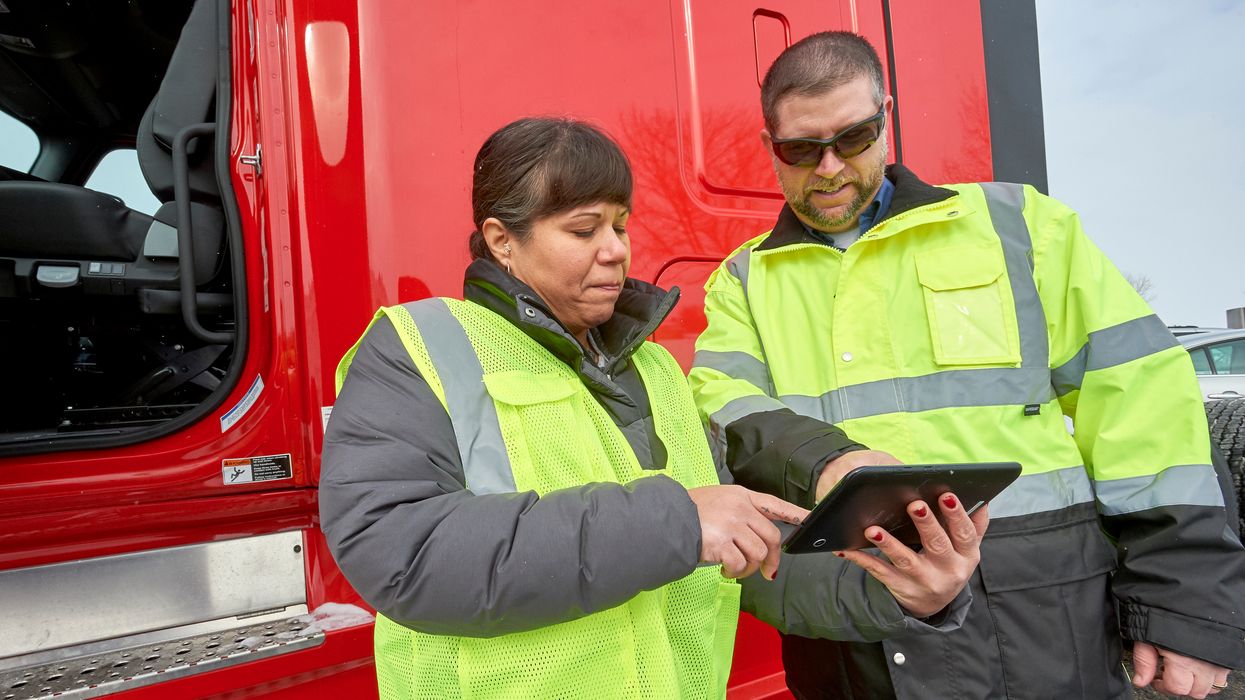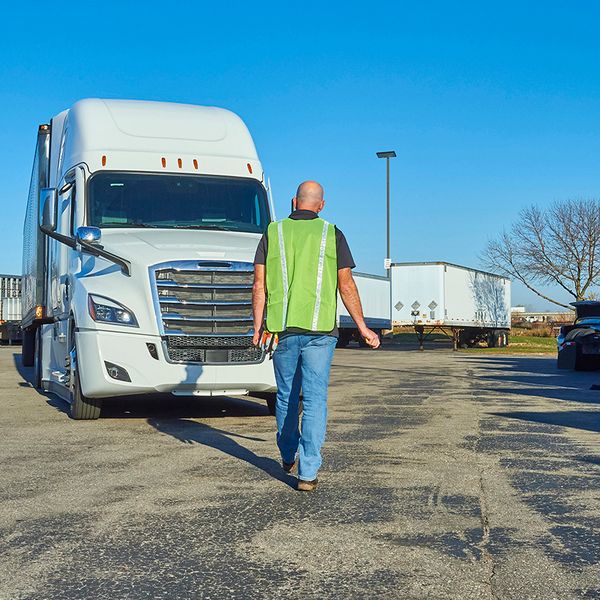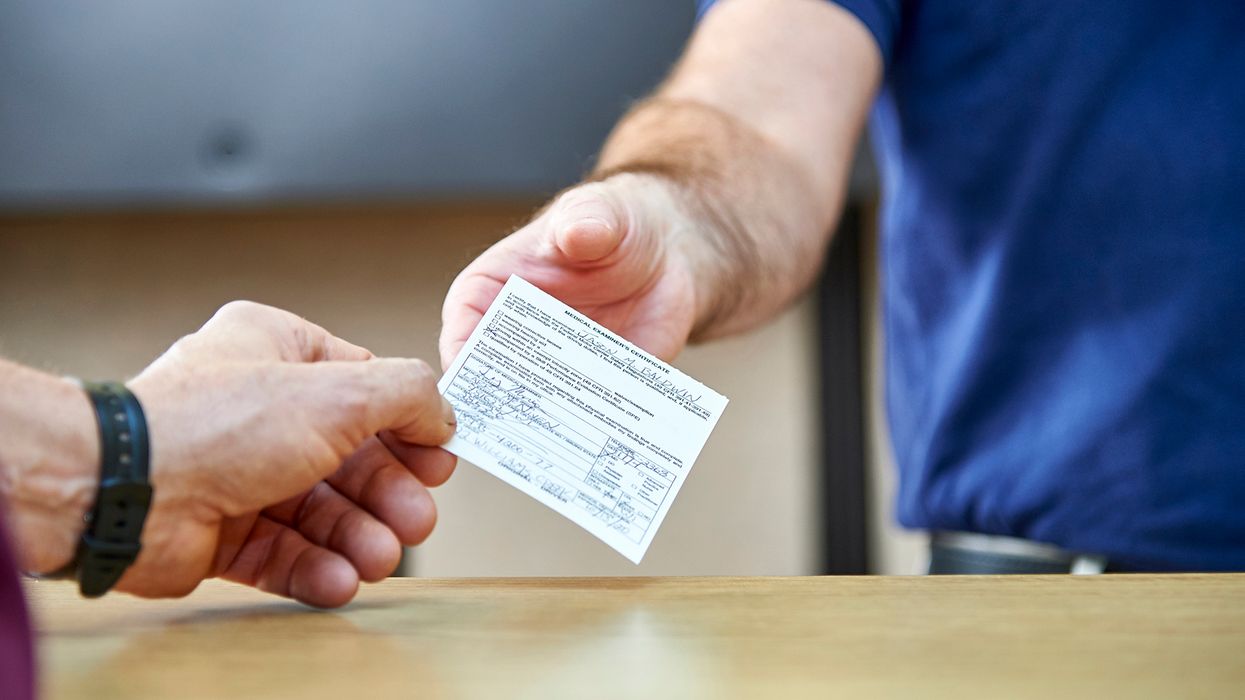Using PC and yard moves on an ELD
Under U.S. federal regulations, electronic logging devices (ELDs) are required to provide the option for two “special driving categories”:
- Yard move enables drivers to record their time as “on-duty/not driving” when operating a commercial motor vehicle (CMV) in an area that has restricted access, such as a fenced or gated yard; and
- Authorized personal use — also known as personal conveyance — allows drivers to log their CMV driving time as “off duty” when driving for purely personal reasons, such as to commute to work or go from a hotel to a local restaurant.
Both categories are optional, meaning motor carriers have the option to enable or disable both categories for their drivers. If enabled, drivers must select the appropriate category before using it, must deselect it when done, and must annotate the ELD record to explain the activity.
Personal conveyance
There are no regulations for personal conveyance (PC), but the FMCSA addresses the issue in its official guidance for 395.8, Question 26, issued more than 20 years ago but more recently revised.
Because PC is not clearly defined by regulation, it’s up to motor carriers to set standards for their drivers to follow. Without such standards, PC is ripe for abuse.
The basic standard is that drivers may log time as “personal use” only when they are “relieved from work and all responsibility for performing work” and are free to pursue personal activities. The vehicle may be empty or loaded, but the driving time (as PC) may not benefit the company in any way, such as by moving the vehicle closer to its next work-related destination.
There are no limitations based on distance or time, but motor carriers are free to set such limits or even to ban PC entirely. Another option is to require pre-authorization for each use of PC.
Acceptable uses
The following are acceptable as personal conveyance (if allowed under company policy):
- Driving from an en-route lodging (e.g., motel or truck stop) to and from restaurants, entertainment facilities, stores, etc., for personal reasons.
- Commuting between your home and a terminal or a trailer drop lot, as long as you’re able to get enough rest at home to prevent fatigue.
- Driving to the first reasonably available and safe location to get your required 10 hours of rest if you run out of hours while loading or unloading and need to move the vehicle.
- Moving your vehicle at the request of a safety official during your off-duty time.
- Transporting personal property while you are off duty, if authorized by the company.
- Driving home from a remote jobsite or “base camp” where you were stationed for a period of time (such as when working for a construction or utility company).
Note: A vehicle may be driven for personal conveyance even if there is cargo on board, including hazmat, if allowed under company policy. If you are inspected during personal conveyance, the inspection time must be logged as “on duty.”
NOT acceptable
The following time must be logged as “driving” and not PC:
- Driving back to your normal work-reporting location or home after dropping your last load at a receiver.
- Driving that “enhances the operational readiness” of the company. For example, skipping a nearby rest area so you can get closer to the next loading/unloading point or other scheduled work destination.
- Continuing a trip to fulfill a business purpose. This includes bobtailing or pulling an empty trailer to retrieve another load, repositioning a commercial vehicle (tractor or trailer) at the company’s direction, or continuing to drive after running out of hours while under dispatch (except as noted above to travel from receiver/shipper to the nearest available rest area).
- Driving to or from a facility for maintenance or to get fuel.
- After delivering a trailer, returning to the point of origin under the direction of the company to pick up another trailer.
- Driving to get rest after being placed out of service for exceeding the hours-of-service limits, unless told to do so by an enforcement officer at the scene.
- Driving to a company terminal or home from a shipper or receiver after loading or unloading.
Yard moves
This “on duty” status is allowed only when drivers are confined to a yard or similar area that is closed to public travel. The FMCSA has not defined what a “yard” is, but the definition of “highway” in 390.5 can help, because a yard cannot be a highway.
By definition, a highway is an area that is open to public travel. Therefore, a yard must be closed to public travel, meaning there are gates, signs, or other restrictions preventing the public from driving into the area.
Motor carriers should evaluate their “yards” and make sure they are not actually “highways” as defined in 390.5. Then, make sure drivers are using the “yard move” setting only in areas that are truly considered to be yards.
New guidance expected soon
The FMCSA has proposed some new guidance on yard moves. Under the proposal, drivers will be able to perform a yard move only in confined areas on private property “or briefly on public roads.” The confined area could be at a motor carrier’s place of business, a shipper’s privately-owned parking lot, or an intermodal yard or port facility, for example.
A yard move on a public road could only occur “if and while public access to the road is restricted through traffic control measures such as lights, gates, flaggers, or other means.” Any driving on a public road without such traffic control measures, or at a public rest area, must be recorded as “driving.”
If you’ve been taking advantage of lax enforcement and allowing your drivers to log drive time as on duty/not driving for movements in public areas — such as at retail store docks or rest areas, or across streets that are not closed off — the proposed guidance could result in your drivers losing more of their daily driving allowance.
The guidance has not yet been finalized, but it might be a good time to audit your drivers’ use of yard moves and ensure it is being used properly. Keep in mind that any driving done on a “highway” as defined in 390.5 must be logged as driving time.

















































